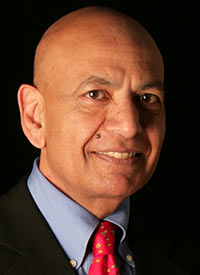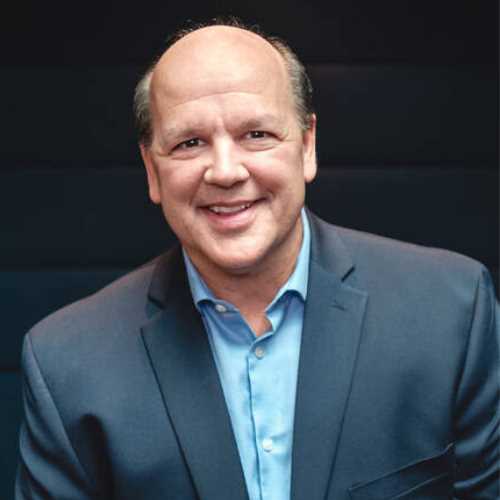
Dr. Anil Gupta
- Thinkers50 Thought Leader on Strategy and Globalization
- Michael Dingman Chair in Strategy & Entrepreneurship, The Smith School of Business, University of Maryland
- Co-Author of Getting China and India Right
Travels From
Maryland
Anil Gupta: Global Trends and Implications for Business Strategy
Dr. Anil Gupta Speaker Biography
Dr. Anil K. Gupta is widely regarded as one of the world’s leading experts on strategy, globalization and entrepreneurship. He is ranked by Thinkers50 as one of the world’s “most influential living management thinkers” and has been named by The Economist as one of the world's "superstars" in a cover story on "Innovation in Emerging Economies." He is one of only 3 professors in the world to have been elected by his peers as a Lifetime Fellow of all three of the most prestigious bodies in the field – Academy of Management, Strategic Management Society, and Academy of International Business, with a combined membership of over 25,000 scholars worldwide.
Anil’s other honors include the “Best Professor in Strategic Management” award from CMO Asia, recognition by BusinessWeek as an Outstanding Faculty in its Guide to the Best B-Schools, induction into the Academy of Management Journals’ Hall of Fame, and listing by Management International Review as a “North American Superstar” for research in strategy and organization. He is also a regular participant at the World Economic Forum summits including the annual meeting in Davos and the regional meetings in China, India, and the Middle East. He is also a member of the Forum’s Global Agenda Council on Emerging Multinationals.
Anil’s newest book – The Silk Road Rediscovered: How Indian and Chinese Companies are Becoming Globally Stronger by Competing in Each Other’s Markets – will be published by Wiley in April 2014. His earlier book - Getting China and India Right (Wiley, 2009) - received the 2009 Axiom Book Awards’ Silver Prize as one of the world’s two best books on globalization/international business and was short-listed for the Asia Society’s Annual Bernard Schwartz Book Award. Anil is also the author, coauthor, or coeditor of Global Strategies for Emerging Asia (Wiley, 2012), The Quest for Global Dominance (Wiley, 2008), Smart Globalization (Wiley, 2003), and Global Strategy and Organization (Wiley, 2003) as well as over 70 papers in leading academic journals.
Anil serves as a columnist for Bloomberg BusinessWeek, as a Contributing Editor for Chief Executive Magazine, and as a contributor to HBR.org. His opinion pieces have also been published in The Wall Street Journal, Financial Times, Chief Executive Magazine, Daily Telegraph, China Daily, Economic Times, and other outlets. He has been interviewed by Harvard Business Review, Economist, The Wall Street Journal, The Washington Post, USA Today, BusinessWeek, Forbes, BBC, CNBC, Bloomberg TV, Reuters TV, New Delhi TV, CCTV China as well as other top-tier global media.
Anil serves regularly as a keynote speaker at major conferences and corporate forums in the US, Europe, Asia, Latin America, and Africa – including the World Economic Forum, Economist conferences, Chief Executive magazine’s CEO2CEO Summits, and the Yale CEO Summit. He has also served as a consultant, keynote speaker and/or executive education faculty with some of the largest corporations in the world including GE, Wal-Mart, IBM, HSBC, Deutsche Bank, H-P, SAP, Microsoft, Schneider Electric, TOTAL, PPG Industries, MTN Group (South Africa), Accenture, Astra Zeneca, Marriott, First Data, Jacobs, Monsanto, ABB, Lockheed Martin, McGraw-Hill, Indian Oil, Steel Authority of India, Huawei Technologies (China), TeliaSonera, Metso, UPM-Kymmene, Finnair, Cemex, and Penoles.
Anil is an elected member of the board of directors of Origene Technologies (a gene cloning company). He has earlier served on the boards of directors of Omega Worldwide (NASDAQ), Vitalink Pharmaceutical Services (NYSE), NeoMagic Corporation (NASDAQ), and TiE-DC, the premier organization of entrepreneurs and venture capitalists in the U.S. Mid-Atlantic region. He also serves on the advisory boards of Asia Silicon Valley Connection and India Globalization Capital. He has also served as an advisor to the US-India Business Council.
To book globalization and entreprenuer speaker, Anil Gupta, call Executive Speakers Bureau at 901-754-9404.
Global Megatrends and Game Changers
In the early 1990s, China was a relatively small economy which had just built its very first highway. Mobile phones were a luxury purchased mainly by rich Europeans. And, social media meant walking over to your neighbor to borrow his/her newspaper. How the world has changed over the last twenty years. Look ahead to 2025. Notwithstanding how much change we have witnessed in recent years, it’s a certainty that the quantum of change over the next ten years will be even greater than over the last twenty. In this talk, Professor Gupta discusses the six megatrends that will drive this transformation:
- Restructuring of the global economy;
- Growing volatility and risks;
- Divergent demographics;
- Digitization of everything;
- Global warming and environmental crunch; and
- Rise of the empowered individual.
The collective impact of these global game changers will be such that the structure and dynamics of the world’s economy, politics, and culture in 2025 will be fundamentally different from what they are today. Professor Gupta also discusses what these megatrends mean for countries, companies, investors and individuals in terms of who can expect to thrive in the new era.
Emerging Markets: Diverging Futures
Ever since Goldman Sachs’ prescient report “Dreaming with BRICs” over a decade ago, emerging markets have been on a ride. From 2000 to 2016, emerging markets’ GDP grew at an average annual rate of 6 percent, over three times the pace of the below 2 percent annual growth for the developed markets. As a direct result, emerging markets’ share of the global economy more than doubled from 17 percent in 2000 to 40 percent in 2016. Never before in the history of the world, has 80 percent of the world’s population become better off at the pace that it has since the turn of the 21st century.
Notwithstanding this glorious ride, it is clear that, since early 2013, the bloom has fallen off the emerging markets. China is undergoing a structural slowdown from an above 10 percent growth rate to around 6-7 percent. India has gone from 9 percent to around 7.5 percent. Economic growth in Brazil and Russia is hovering around one percent. Many other markets such as Indonesia, Thailand, Turkey and South Africa also appear to be mired in significant turmoil. These developments raise one of the most important questions facing every enterprise and every investor – Is the emerging market story over?
In this talk, Professor Gupta addresses this question head on. His central message is that the days of emerging markets moving up in tandem are indeed over. China is unlikely to remain the driver of a worldwide commodity boom. Similarly, the U.S. is unlikely to remain the font of easy money for much of the world. From here on, only those emerging markets that are able to undertake much needed internal reforms (stable governments, investment in infrastructure and education, and institutions that are efficient as well as responsive to citizens’ needs) can hope to thrive. Others run a serious risk of being trapped at their current low- or middle-income status for a very long time. Professor Gupta also shares his analysis of which countries appear to be better bets than others and what these developments mean for companies and investors.
Asia’s Rise and Its Implications
Asia’s rise will be one of the defining game changers for the global economy in the 21st century. Asia today accounts for about over 35 percent of the world’s GDP as compared with about a quarter each for North America and Europe. Since Asia continues to grow faster than each of the other two continents, it is almost certain that, by 2025, Asia’s GDP will be larger than that of the US and Europe combined. Further, Asia’s impact on the global economy is multidimensional – as a mega-market, as the world’s factory, as a rising hub for global R&D, as a source of capital, and as the springboard for the rise of new global champions. Asia is also becoming more “Asian” in that intra-Asia trade is growing faster than Asia’s trade with the rest of the world. This talk will examine the forces propelling Asia’s rise and discuss a number of related questions including:
- What are the risks? What could derail Asia’s rise?
- What are the implications of China’s slowdown for corporations and investors?
- What lies ahead for India and Indonesia, the two largest Asian emerging economies after China?
- How should MNCs prepare themselves to benefit from Asia’s rise?
- Implications for investors? And, for young managers?
Getting China and India Right
For almost three decades, China and India have been the two most dynamic emerging markets in the world. Unlike Latin America or Africa, both countries are resource poor. Yet, since 1990, both have been the world’s two fastest growing large economies. The answer lies in the ability of the two countries to boost the productivity of their peoples at some of the most rapid rates in the world.
Today, China is the world’s second largest economy and India the sixth largest – at market exchange rates. By 2025, while China would have reduced the size gap with the United States, India is likely to have overtaken Italy, France, UK, Germany and even Japan to become the third largest. By the middle of the 21st century, both China and India are likely to overtake the U.S. also to become the world’s two largest economies. In many ways, this will be a back-to-the-future story, since China and India were the world’s two largest economies for much of recorded history. They became poor only during the 19th and 20th centuries when the industrial revolution passed them by.
As China and India continue to rise, they are transforming the global economy in multiple ways:
- They are two of the world’s biggest and fastest growing markets for almost every product or service.
- They are two of the world’s most important platforms for cost reduction for both blue- and white-collar work.
- They are the world’s two most important rising powers for technology and innovation.
- They are also the world’s most prolific springboards for the emergence of new, powerful, and ambitious global competitors.
In this talk, Professor Gupta discusses the factors propelling China and India, the challenges that each country faces, and implications of these developments for multinational corporations.
Global Enterprise 2020
The structure and dynamics of the global economy are changing rapidly. Despite the ups and downs in individual economies, emerging markets as a group continue to grow at three times the pace of developed markets; by 2025, they will account for over half of the world’s GDP. The diffusion of mobile broadband to every corner of the earth continues to make cross-border collaboration easier, cheaper, and more ubiquitous. And, the technology revolution continues unabated – electric and/or autonomous cars, wearable computing, genetic engineering, shale oil and gas, human-scale robots, etc. These developments will lead to the disruption of industries at an even faster pace than what we’ve seen over the last decade.
Given these developments, what must today’s corporations do to emerge or remain as the global leaders in their industries ten years from now? The answer lies in: (i) rethinking global strategy i.e., commitment to emerging markets, atomization of the value chain, and leveraging global platforms to create highly customized local solutions; (ii) rethinking global innovation i.e., 360-degree innovation, distributed innovation, open innovation, and frugal innovation; (iii) rethinking global organization i.e., connect-and-coordinate rather than command-and-control plus a strong one-company culture; and (iv) globalizing the corporate mindset i.e., cultivating leaders who combine in-depth knowledge of key markets and cultures with an ability to connect the dots globally.
Cultivating A Global Mindset
In 2000, Chrysler’s then president traveled to India to study the market. At the end of his visit, he remarked, “Call me when you’ve built some roads.” He simply didn’t anticipate that the Indian auto market would grow by over 500% over the next 10 years. India’s car sales shot up from 518,000 units in 2000 to 2.8 million in 2010, making it the world’s sixth largest. Not surprisingly, Chrysler is notable for its near-absence. In 2015, Chrysler-Fiat’s share in India was a mere 0.4%.
As this story illustrates, we are in the middle of a radical paradigm shift in the global economic landscape. Non-linear changes are particularly risky times for companies and people entrenched in old mindsets. No longer can you continue to rely on old lenses to make sense of the world around you. The winning global leaders, whether individuals or companies, will be the ones with a global mindset who truly grasp the unprecedented transformation of the global economy, and possess the capabilities to sense, filter, and integrate diverse opportunities on a global scale ahead of the pack.
Through real-world examples, Professor Gupta illustrates how a global mindset can enable a company to be an early mover in identifying new opportunities in global markets. It also offers concrete guidelines that individuals and companies can use to develop a global mindset, which requires not only local depth (i.e., an openness to and knowledge of diversity across cultures and markets), but also global connect (i.e., the ability to integrate across this diversity).
Smart Globalization – Building and Leveraging Global Presence
Globalization is a double-edged sword. The global or globalizing firm has the potential to reap several types of benefits – the vast potential of a much larger market arena, providing coordinated products and services to global customers, capturing scale- and location-based cost efficiencies, and exposure to a multiplicity of new product and process ideas.
However, globalization also exposes the firm to numerous strategic and organizational challenges emanating from a dramatic increase in diversity, complexity, and uncertainty – external as well as internal to the firm. How managers address these challenges determines whether globalization yields competitive advantage or disadvantage and makes the company stronger or weaker. “Smart Globalization” is the ability to capture the benefits and minimize the costs and risks.
Using real-world examples, in this talk, Professor Gupta discusses how corporate leaders can systematically globalize their firms’ market presence, what logic should guide them in leveraging the world’s physical, technological and talent resources to create competitive advantage, and what they must do to globalize the mindset of the people in the company.



























